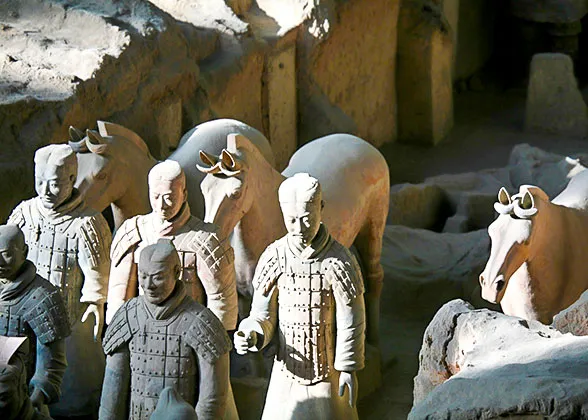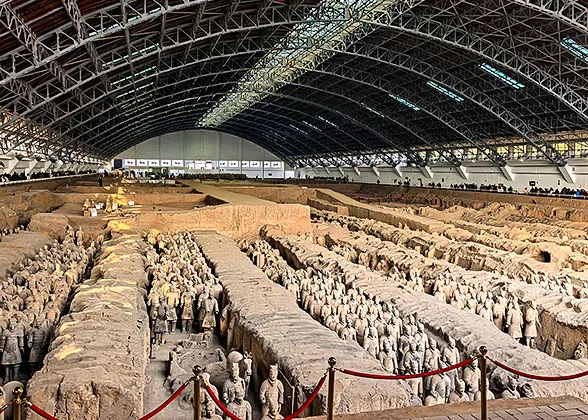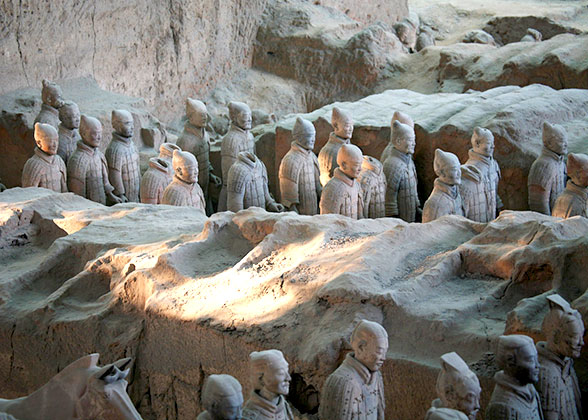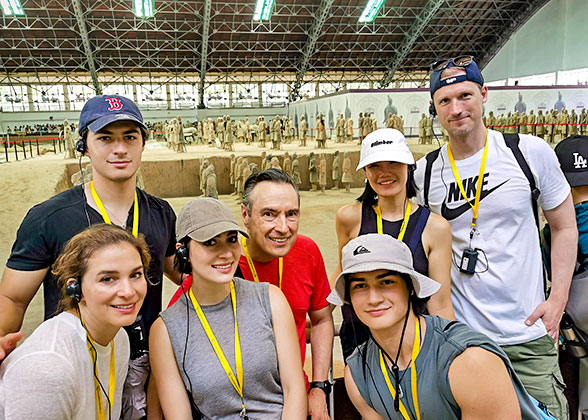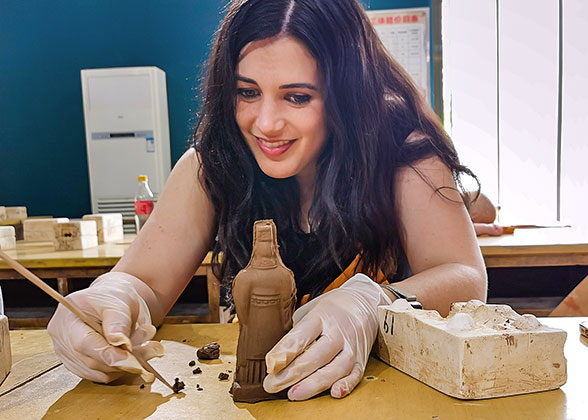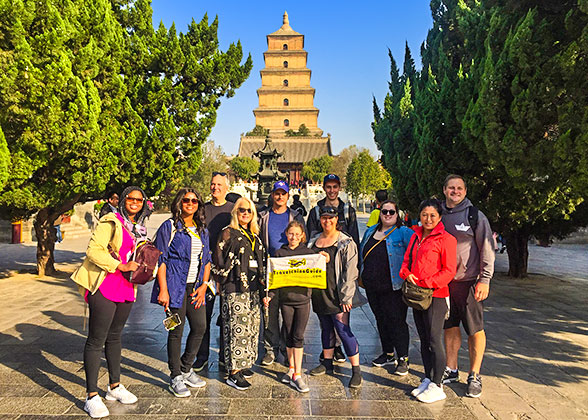Pit 4 of Terracotta Army Museum
Why Is the Pit 4 Empty?
In the other pits at the Terracotta Warriors and Horses Museum, there are many terracotta warriors, horses, and weapons, but Pit 4 remains the only one empty. Why? Currently, archaeologists have two main hypotheses:
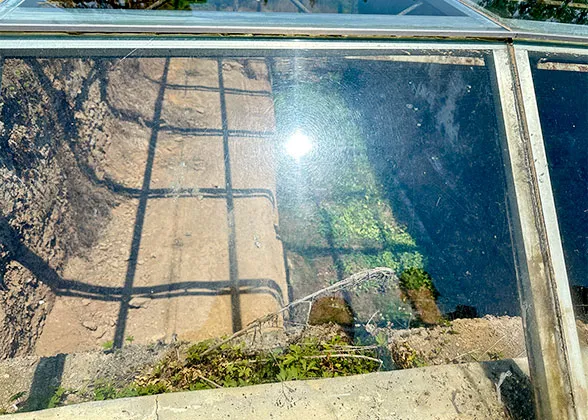 |
| Excavated Area of Pit 4 Covered With a Glass Enclosure |
1. Construction of Pit 4 Is Halted Due to the War
Many archaeologists believe this is mostly linked to the peasant uprisings at the end of the Qin Dynasty (221 - 207 BC). After the death of Qin Shi Huang, the second emperor of the Qin Dynasty continued to build the Terracotta Army. At that time, the Qin State encountered a peasant uprising, and the Qin army fighting on the front line of the battlefield suffered heavy losses. As a result, the laborers working on the pits were probably drafted to reinforce the front lines, causing the abrupt halt in Pit 4's construction.
So, if construction had not been interrupted, what would Pit 4 have contained?
Then, what kind of military force was planned for Pit 4 of Terracotta Army? The most plausible answer is cavalry, and here are the reasons:
|
|
►Military Necessity
2. Pit 4 Was Merely an Earth-excavation Trench for Other Pits
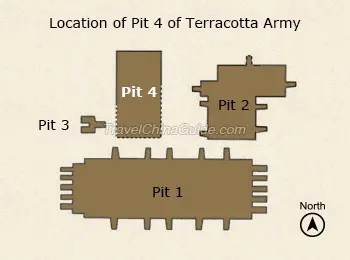 |
| Location Map of Terracotta Army Pit 4 |
1. Unlike other terracotta army pits, Pit 4 lacks the characteristic sloping entrance ramps.
2. The soil inside the pit was deliberately backfilled rather than accumulated naturally, indicating that the backfilled soil was what remained after use.
3. It was much wider from north to south than from east to west, thus not in the same direction as the other three pits.
4. If it is a terracotta warriors' pit, it should have been designed and constructed together with the other three pits, rather than being empty.
5. To date, not a single piece of relics from the Qin Dynasty, even common construction materials like tiles, have been found in Pit 4.
- Terracotta Warriors Pit 1
- Best Time to Visit Terracotta Army
- Top 20 Questions about Terracotta Army
- How to Visit Terracotta Army - A Comprehensive Visitor's Guide
